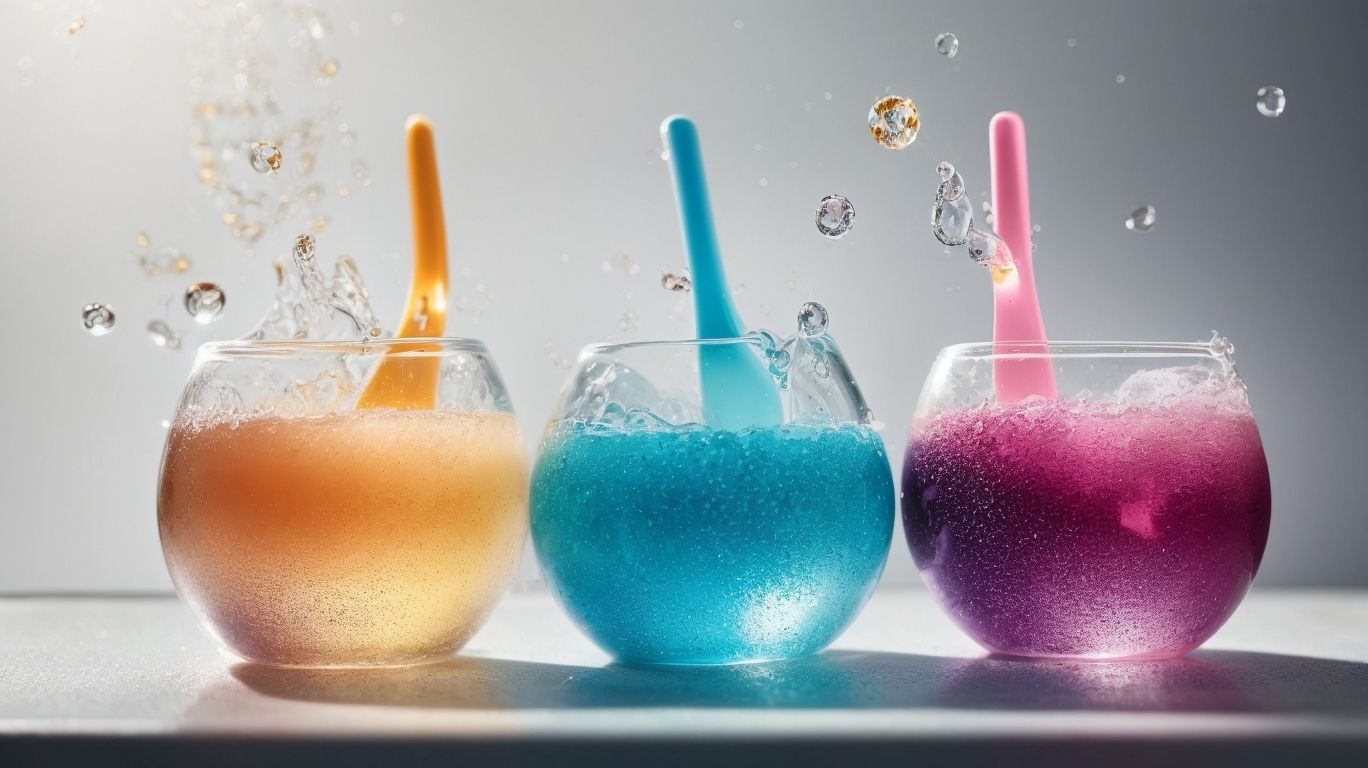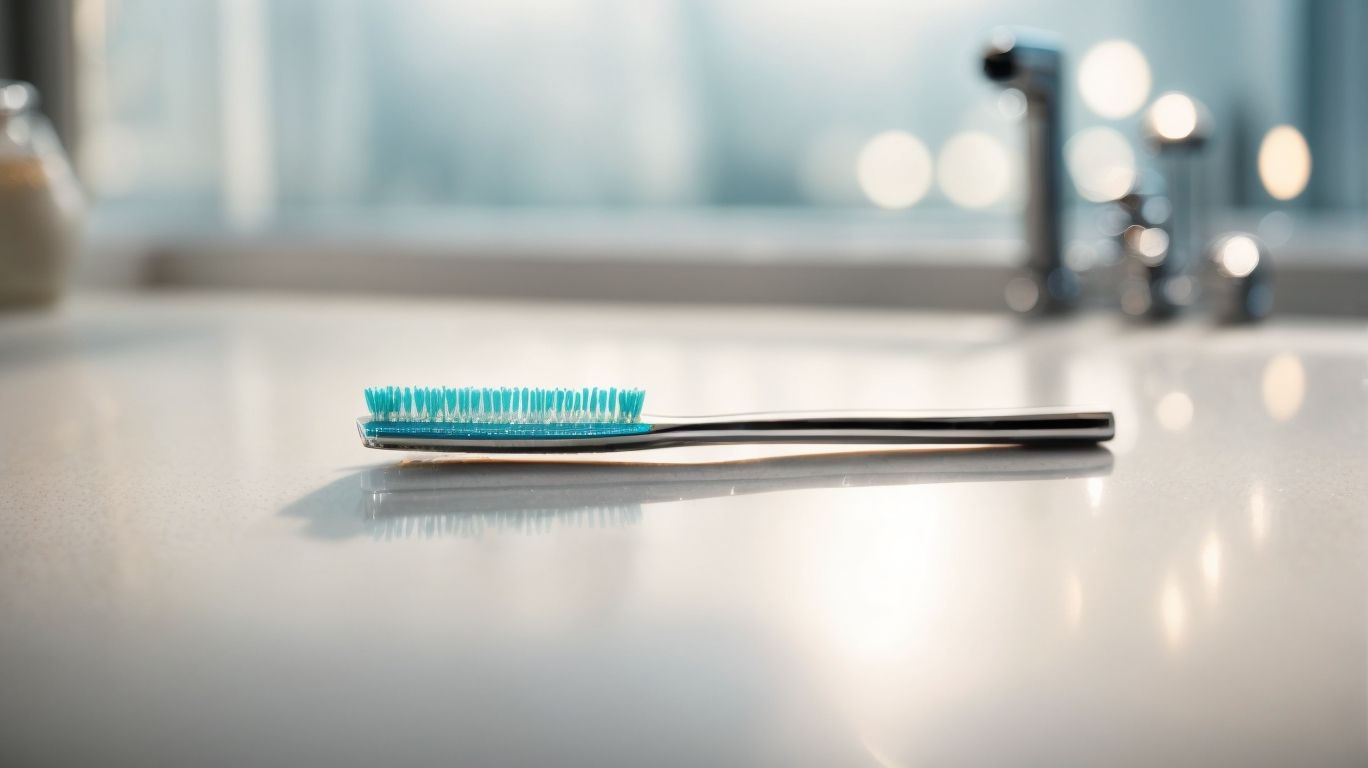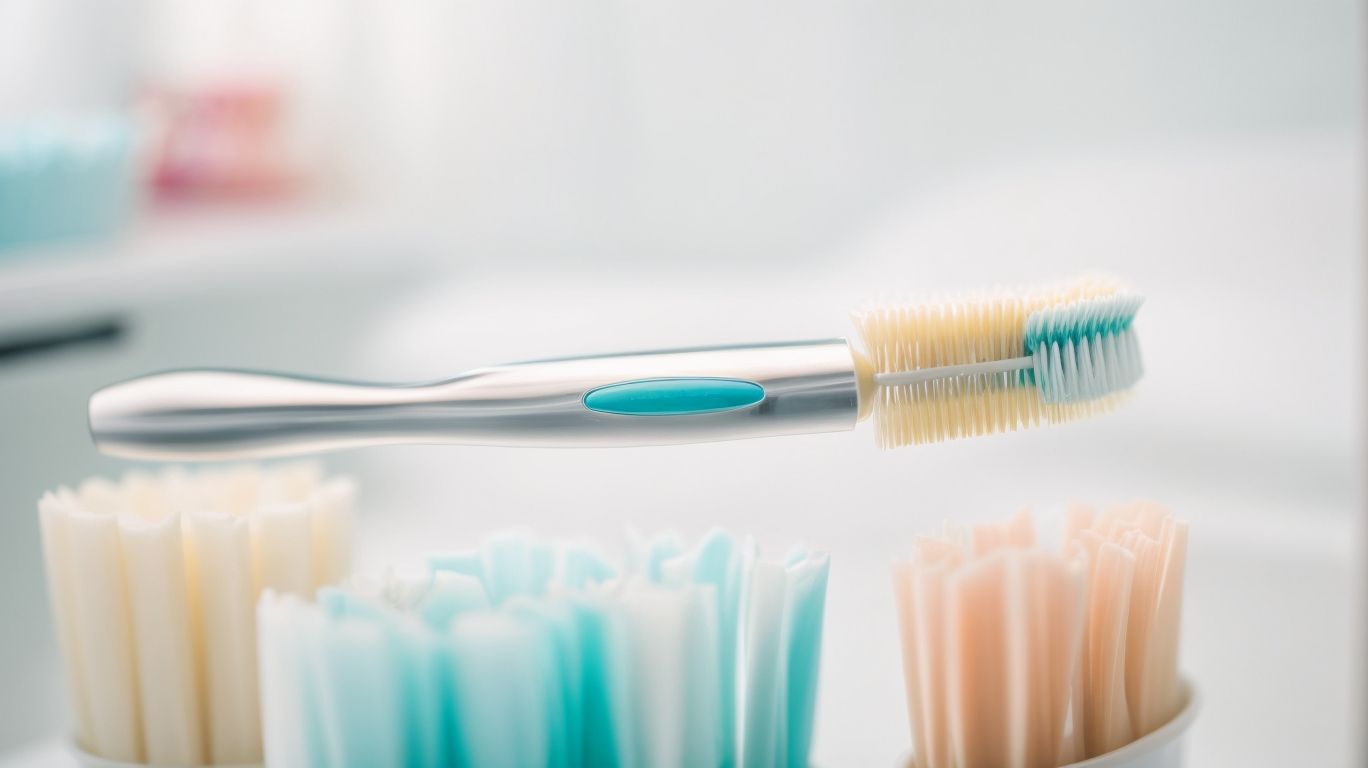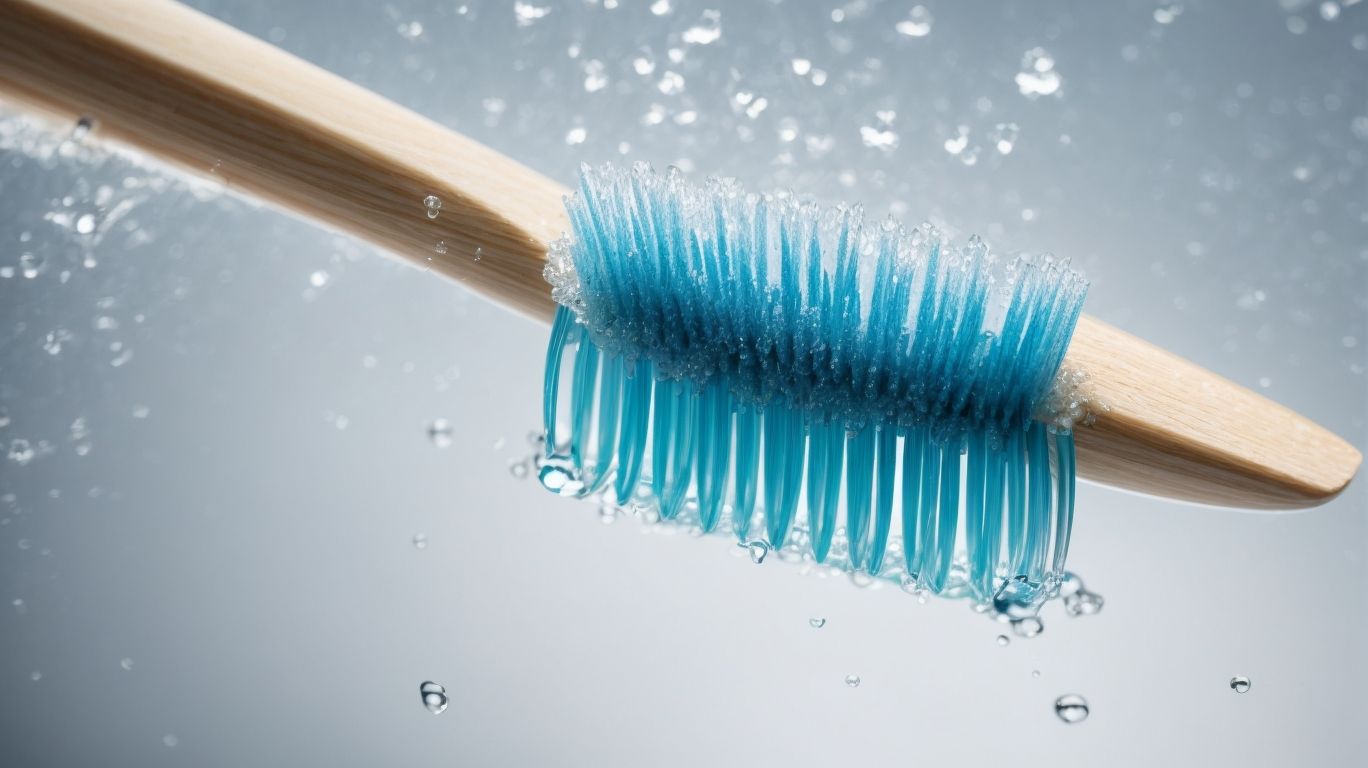.jpg)
Keeping your toothbrush clean is essential for maintaining good oral hygiene and ensuring effective dental care. A clean toothbrush not only helps in removing plaque, bacteria, and food particles from your teeth but also prevents the spread of germs and promotes overall dental health.
Understanding the importance of keeping your toothbrush clean and knowing the right methods to clean it can significantly contribute to your oral hygiene routine. Proper toothbrush maintenance practices are crucial for maintaining its effectiveness and prolonging its lifespan.
In this article, we will explore the significance of cleaning your toothbrush, how often you should clean it, various methods to clean it effectively, and tips for toothbrush maintenance. By following these guidelines, you can ensure that your toothbrush remains clean, hygienic, and in optimal condition for efficient dental care.
Key takeaways:
- Why cleaning your toothbrush is important: Regularly cleaning your toothbrush is essential for maintaining good oral hygiene and preventing the growth of bacteria, fungi, and viruses.
- How often to clean your toothbrush: It is recommended to clean your toothbrush after each use to remove any residue and ensure its effectiveness in removing plaque and debris from your teeth.
- Methods to clean your toothbrush: There are several methods you can use to clean your toothbrush, such as rinsing it with water, soaking it in an anti-bacterial mouthwash, using a hydrogen peroxide solution, boiling it, or using an ultraviolet toothbrush sanitizer.
Why Is Cleaning Your Toothbrush Important?

Photo Credits: Feelsgoodtosmile.Com by Philip White
Cleaning your toothbrush is important for maintaining oral hygiene and preventing the growth of bacteria.
| Preventing illness: | Regularly cleaning your toothbrush helps to remove bacteria, viruses, and fungi that can cause infections and illnesses. |
| Prolonging the lifespan: | Properly cleaning and storing your toothbrush can extend its lifespan, ensuring it remains effective and efficient. |
| Improving oral health: | A clean toothbrush removes plaque and debris from your teeth, reducing the risk of cavities, gum disease, and bad breath. |
| Eliminating cross-contamination: | Cleaning your toothbrush prevents the transfer of harmful microorganisms from one person to another. |
So, why is cleaning your toothbrush important?
By adopting simple cleaning techniques, such as rinsing with water after each use and periodically sanitizing, you can maintain a clean and germ-free toothbrush.
How Often Should You Clean Your Toothbrush?

Photo Credits: Feelsgoodtosmile.Com by Scott Rodriguez
To maintain good oral hygiene, it is important to clean your toothbrush regularly. How often should you clean your toothbrush? Ideally, you should clean your toothbrush after every use to remove any residual bacteria or debris. Some effective ways to clean your toothbrush include rinsing it thoroughly with water, soaking it in an antibacterial mouthwash, or using a toothbrush sanitizer. By cleaning your toothbrush regularly, you can ensure that it remains hygienic and effective in removing plaque and bacteria from your teeth. Did you know that the bristle toothbrush dates back to ancient China, where people used to chew on twigs to clean their teeth?
Methods to Clean Your Toothbrush

Photo Credits: Feelsgoodtosmile.Com by Austin Nelson
Discover effective methods to clean your toothbrush and maintain optimal oral hygiene. From rinsing with water to using antibacterial mouthwash or hydrogen peroxide solution, there are various approaches to ensure the cleanliness of your toothbrush. Considering boiling the toothbrush or utilizing ultraviolet toothbrush sanitizers can help eliminate harmful bacteria. By exploring these different techniques, you can make informed decisions about how to best sanitize your toothbrush and promote a healthy mouth.
Rinse with Water
To ensure proper toothbrush hygiene, rinsing it with water is a crucial step. Here are the steps to follow:
- After brushing, rinse the toothbrush under running water to remove any toothpaste residue and loosened debris.
- Gently tap the toothbrush against the sink to shake off excess water.
- Allow the toothbrush to air dry in an upright position to prevent bacterial growth.
True story: A friend of mine neglected to regularly rinse her toothbrush. Over time, she noticed a foul smell and discoloration on the bristles. After researching proper toothbrush cleaning techniques, she started diligently rinsing her toothbrush. The foul smell disappeared, and the discoloration reduced significantly. Regular rinsing with water can help maintain the cleanliness and effectiveness of your toothbrush.
Soak in Anti-Bacterial Mouthwash
- Soaking your toothbrush in anti-bacterial mouthwash is a highly effective method to soak it and keep it clean.
- After brushing your teeth, make sure to rinse off any excess toothpaste or debris from your toothbrush.
- Take a cup or a small container and fill it with a sufficient amount of mouthwash to fully immerse the bristles of your toothbrush.
- Gently place your toothbrush head-down into the cup, ensuring that the bristles are completely submerged.
- Allow the toothbrush to soak in the mouthwash for a minimum of 15 minutes. This provides ample time for the anti-bacterial properties of the mouthwash to effectively eliminate bacteria on the bristles.
- Once the soaking is complete, carefully take the toothbrush out of the mouthwash and thoroughly rinse it with clean water to eliminate any residual mouthwash taste before using it again.
By regularly soaking your toothbrush in anti-bacterial mouthwash, you can ensure its cleanliness and minimize the risk of bacterial contamination.
Use Hydrogen Peroxide Solution
- To effectively clean your toothbrush and prevent bacteria buildup, use a hydrogen peroxide solution.
- Start by rinsing your toothbrush with warm water to remove any debris.
- Next, in a small cup, mix equal parts hydrogen peroxide and water.
- Submerge the bristles of your toothbrush in the hydrogen peroxide solution.
- Allow the toothbrush to soak in the solution for about 10 minutes.
- Afterwards, remove the toothbrush from the solution and thoroughly rinse it with warm water.
- Before using it again, ensure the toothbrush air dries completely.
Sarah, a dental hygienist, encountered a persistent strong odor on her toothbrush even after rinsing. Determined to find a solution, she decided to incorporate the use of a hydrogen peroxide solution for cleaning it. To her amazement, the soaking process resulted in a fresh and clean smelling toothbrush. As a result, Sarah has now adopted hydrogen peroxide as an essential component in her regular toothbrush cleaning routine.
Boil the Toothbrush
- Boil the water in a pot or kettle.
- Once the water reaches a rolling boil, remove it from the heat source.
- Place the toothbrush in the hot water, ensuring it is fully submerged.
- Let the toothbrush soak for about 3-5 minutes.
- Using tongs or a heat-resistant utensil, carefully remove the toothbrush from the hot water.
- Rinse the toothbrush under cool running water to remove any residual heat.
- Allow the toothbrush to air-dry completely before using it again.
By boiling the toothbrush, you can effectively eliminate bacteria and maintain good oral hygiene.
Use Ultraviolet Toothbrush Sanitizer
Using an ultraviolet (UV) toothbrush sanitizer is an effective method for maintaining optimal oral hygiene and ensue your toothbrush remains clean and free from harmful bacteria. There are several benefits of incorporating a UV toothbrush sanitizer into your dental routine:
- Eliminates bacteria: The germicidal properties of UV light make it highly effective in eliminating a wide range of bacteria and viruses that could potentially be present on your toothbrush.
- Convenience and ease of use: UV toothbrush sanitizers are designed to be compact and portable, allowing for convenient usage both during travel and in your daily oral care routine.
- Provides long-lasting protection: With each use, UV sanitizers continuously kill bacteria, ensuring that your toothbrush remains clean and free from harmful microorganisms until your next brushing session.
- Prolongs brush bristle lifespan: Utilizing a UV sanitizer can help extend the lifespan of your toothbrush by preserving the integrity of the bristles, allowing for optimal performance over an extended period of time.
Pro-tip: Remember to replace your toothbrush every three to four months, or even sooner if the bristles become frayed or worn out. This regular replacement practice, in conjunction with the use of a UV toothbrush sanitizer, will help maintain excellent oral hygiene.
Tips for Toothbrush Maintenance

Photo Credits: Feelsgoodtosmile.Com by Scott Mitchell
Proper toothbrush maintenance is crucial for oral hygiene, and in this section, I’ll share some valuable tips to keep your toothbrush in top shape. We’ll start by discussing the importance of storing your toothbrush in an upright position. Next, I’ll advise on keeping your toothbrush away from the toilet area to avoid any cross-contamination. We’ll also touch upon the significance of not sharing toothbrushes and the need to replace them regularly. So, let’s dive in and ensure our toothbrushes stay clean and effective!
Store in an Upright Position
To ensure good oral hygiene and store your toothbrush properly, it is essential to keep it in an upright position. Follow these steps for optimal toothbrush storage:
- Thoroughly rinse your toothbrush after each use.
- Gently shake off any excess water.
- Position the toothbrush with the bristles facing upwards in a stand or holder.
- Make sure the toothbrush does not come into contact with any other toothbrush or surface.
- Avoid covering the toothbrush, as doing so can create a moist environment that promotes the growth of bacteria.
Fact: Storing your toothbrush in an upright position not only prevents the buildup of bacteria but also allows the bristles to properly air dry, ensuring cleanliness and readiness for use.
Keep Away from Toilet Area
Keeping your toothbrush away from the toilet area is crucial for maintaining optimal oral hygiene. To achieve this, follow these steps:
- Make sure to store your toothbrush in a clean and dry location, separate from the toilet.
- Avoid placing it on the bathroom sink to shield it from germs caused by splashes.
- Use a toothbrush holder or cover to safeguard it against airborne bacteria.
- Ensure proper bathroom ventilation to minimize bacteria spread.
- Regularly clean the toothbrush holder to prevent bacterial growth.
Avoid Sharing Toothbrushes
Sharing toothbrushes should be avoided to prevent the transfer of harmful bacteria and reduce the risk of infections and oral diseases. Maintaining good oral hygiene requires individuals to have their own toothbrushes to prevent the exchange of germs. Additionally, sharing toothbrushes can lead to the spread of cold sores, bacteria from bleeding gums, and even viruses like hepatitis B and C. It is crucial to educate others about the importance of using separate toothbrushes and encourage them to follow proper oral hygiene practices. By taking these precautions, we can promote healthier oral care habits and safeguard our overall well-being.
Replace Toothbrush Regularly
To maintain optimal oral hygiene, it is crucial to consistently replace your toothbrush. Here are several reasons why it is necessary:
- Bristle wear: Over time, the bristles on your toothbrush become frayed and worn, diminishing their effectiveness in cleaning your teeth.
- Bacterial buildup: Toothbrushes can harbor harmful bacteria, fungi, and viruses, posing a risk to your oral health. Regularly replacing your toothbrush helps minimize the chance of contamination.
- Reduced effectiveness: As the bristles wear down, the toothbrush becomes less capable of efficiently removing plaque and debris, compromising the efficacy of your oral hygiene routine.
- Health conditions: Certain health issues like gum disease or a cold can worsen if you continue using an old toothbrush, as it may reintroduce harmful bacteria into your mouth.
By replacing your toothbrush regularly, ideally every three to four months, you will ensure optimal oral hygiene and prevent potential health complications.
Fun Fact: The ancient Chinese civilizations in the 15th century were pioneers in toothbrush use. They crafted toothbrushes using bristles made from the neck hairs of Siberian or Chinese boars, attaching them to bamboo handles.
Facts:
Some Facts About How To Clean Toothbrush:
- ✅ Toothbrushes can harbor bacteria and viruses, including those that cause the common cold and flu. (Source: dynamicdentalinc.com)
- ✅ The National Dental Association recommends replacing toothbrushes every three months and cleaning them thoroughly at least once a week. (Source: dynamicdentalinc.com)
- ✅ Ways to clean toothbrushes include soaking them in antibacterial mouthwash, storing them in hydrogen peroxide, boiling them for three minutes, running them through the dishwasher without soap, or using a UV toothbrush sanitizer. (Source: dynamicdentalinc.com)
- ✅ Studies show that soaking toothbrushes in Listerine can also be effective in sanitizing them. (Source: dynamicdentalinc.com)
- ✅ It is important to clean your toothbrush regularly to remove food, plaque, and bacteria that can accumulate on the bristles. (Source: greatist.com)
Frequently Asked Questions
How often should I clean my toothbrush to prevent illness?
The National Dental Association recommends cleaning toothbrushes at least once a week to prevent illness, particularly during cold and flu season.
What are some ways to clean toothbrushes effectively?
Toothbrushes can be cleaned by soaking them in antibacterial mouthwash, storing them in hydrogen peroxide, boiling them for three minutes, running them through the dishwasher without soap, or using a UV toothbrush sanitizer.
Can I clean my electric toothbrush in the same way as a conventional toothbrush?
Yes, electric toothbrush heads can be replaced and cleaned using the same methods as conventional toothbrushes.
Is it necessary to sanitize toothbrushes regularly?
Regular sanitization is not necessary, but if desired, toothbrushes can be soaked in hydrogen peroxide, antibacterial mouthwash, denture cleaner, or a UV toothbrush sanitizer.
How can I remove debris from my toothbrush effectively?
Hot water can soften bristles and make it easier to remove debris, while warm water can help kill bacteria. It is recommended to rinse your toothbrush thoroughly with water after each use.
Is it important to store toothbrushes separately to prevent the spread of germs?
Yes, storing toothbrushes separately in a ventilated space is important to prevent the spread of germs among family members. Storing them together in one cup should be avoided.

A highly skilled and accomplished Doctor of Dentistry, with over 10 years of experience, holding a Doctor of Dental Medicine (DMD) degree from Howard University College of Dentistry, Washington.